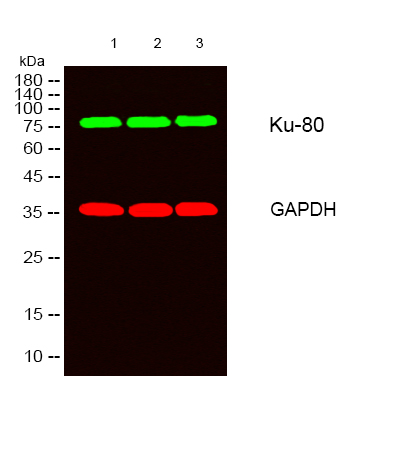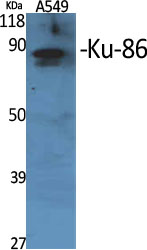Dystrophin rabbit-FC recombinant protein
- Catalog No.:YD3137
- Reactivity:Human;
- Purity:
- >90% as determined by SDS-PAGE
- Gene Name:
- Dystrophin
- Protein Name:
- Dystrophin
- Sequence:
- Amino acid:1-246,with rabbit FC tag.
- Human Gene Id:
- 1756
- Human Swiss Prot No:
- P11532
- Formulation:
- Phosphate-buffered solution
- Source:
- Mammalian cells
- Storage Stability:
- -15°C to -25°C/1 year(Avoid freeze / thaw cycles)
- Background:
- dystrophin(DMD) Homo sapiens The dystrophin gene is the largest gene found in nature, measuring 2.4 Mb. The gene was identified through a positional cloning approach, targeted at the isolation of the gene responsible for Duchenne (DMD) and Becker (BMD) Muscular Dystrophies. DMD is a recessive, fatal, X-linked disorder occurring at a frequency of about 1 in 3,500 new-born males. BMD is a milder allelic form. In general, DMD patients carry mutations which cause premature translation termination (nonsense or frame shift mutations), while in BMD patients dystrophin is reduced either in molecular weight (derived from in-frame deletions) or in expression level. The dystrophin gene is highly complex, containing at least eight independent, tissue-specific promoters and two polyA-addition sites. Furthermore, dystrophin RNA is differentially spliced, producing a range of different transcripts, encoding a large set of protein isoforms. Dystrophin (as enc
- Function:
- alternative products:Additional isoforms seem to exist,disease:Defects in DMD are a cause of cardiomyopathy dilated X-linked type 3B (CMD3B) [MIM:302045]; also known as X-linked dilated cardiomyopathy (XLCM). Dilated cardiomyopathy is a disorder characterized by ventricular dilation and impaired systolic function, resulting in congestive heart failure and arrhythmia. Patients are at risk of premature death.,disease:Defects in DMD are the cause of Becker muscular dystrophy (BMD) [MIM:300376]. BMD resembles DMD in hereditary and clinical features but is later in onset and more benign.,disease:Defects in DMD are the cause of Duchenne muscular dystrophy (DMD) [MIM:310200]. DMD is the most common form of muscular dystrophy; a sex-linked recessive disorder. It typically presents in boys aged 3 to 7 year as proximal muscle weakness causing waddling gait, toe-walking, lordosis, frequent falls, a
- Subcellular Location:
- Cell membrane, sarcolemma ; Peripheral membrane protein ; Cytoplasmic side . Cytoplasm, cytoskeleton . Cell junction, synapse, postsynaptic cell membrane . In muscle cells, sarcolemma localization requires the presence of ANK2, while localization to costameres requires the presence of ANK3. Localizes to neuromuscular junctions (NMJs). In adult muscle, NMJ localization depends upon ANK2 presence, but not in newborn animals. .
- Expression:
- Expressed in muscle fibers accumulating in the costameres of myoplasm at the sarcolemma. Expressed in brain, muscle, kidney, lung and testis. Most tissues contain transcripts of multiple isoforms. Isoform 15: Only isoform to be detected in heart and liver and is also expressed in brain, testis and hepatoma cells.
- June 19-2018
- WESTERN IMMUNOBLOTTING PROTOCOL
- June 19-2018
- IMMUNOHISTOCHEMISTRY-PARAFFIN PROTOCOL
- June 19-2018
- IMMUNOFLUORESCENCE PROTOCOL
- September 08-2020
- FLOW-CYTOMEYRT-PROTOCOL
- May 20-2022
- Cell-Based ELISA│解您多样本WB检测之困扰
- July 13-2018
- CELL-BASED-ELISA-PROTOCOL-FOR-ACETYL-PROTEIN
- July 13-2018
- CELL-BASED-ELISA-PROTOCOL-FOR-PHOSPHO-PROTEIN
- July 13-2018
- Antibody-FAQs

